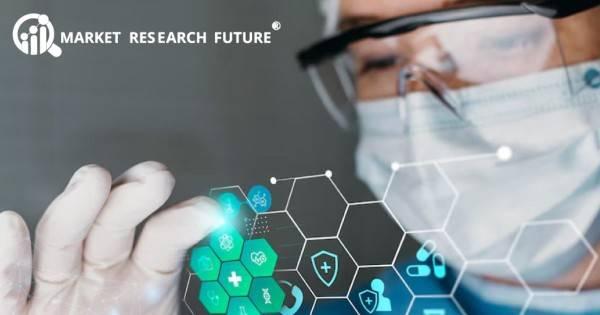Advancing TDM: The Next Generation of Non-Invasive Monitoring

Therapeutic Drug Monitoring (TDM) plays a crucial role in optimizing drug dosages for individual patients, ensuring efficacy while minimizing adverse effects. Traditional TDM methods, often involving invasive blood draws, can be inconvenient, painful, and resource-intensive. Looking ahead to 2025, the landscape of TDM is poised for a significant transformation, driven by innovative, non-invasive technologies that promise to revolutionize patient care and streamline healthcare operations. This blog post explores the exciting future of TDM, focusing on these non-invasive advancements and their potential impact on various stakeholders within the healthcare ecosystem.
MRFR analysis indicates the Therapeutic Drug Monitoring market was worth $4.78 billion in 2023. Growth is predicted at a CAGR of 5.89%, reaching $9.5 billion by 2035 from $5.06 billion in 2024.
Non-Invasive TDM: A Paradigm Shift in Patient Care
The shift towards non-invasive TDM represents a significant paradigm shift in patient care. Imagine a future where drug levels can be monitored effortlessly, without the need for needles or frequent clinic visits. This is the promise of non-invasive technologies, which offer numerous benefits:
- Improved Patient Comfort and Compliance: Eliminating the pain and anxiety associated with blood draws improves patient comfort and encourages better adherence to treatment plans. This is particularly crucial for patients requiring long-term therapy or those with difficult venous access.
- Reduced Healthcare Costs: Non-invasive methods can reduce the costs associated with blood draws, including consumables, laboratory personnel time, and potential complications. This translates to significant cost savings for healthcare providers.
- Enhanced Accessibility: Non-invasive TDM can be performed at the point of care, even in remote or resource-limited settings, improving access to personalized medicine for a wider population.
- Real-Time Monitoring: Some non-invasive technologies offer the potential for real-time drug level monitoring, allowing for immediate dosage adjustments and preventing potentially dangerous fluctuations.
Emerging Non-Invasive TDM Technologies: A Glimpse into 2025
Several promising non-invasive technologies are emerging, each with its unique strengths and potential applications:
- Transdermal Drug Monitoring: This approach involves measuring drug levels through the skin using techniques like microneedles or iontophoresis. Advances in biosensor technology are making transdermal monitoring increasingly accurate and reliable.
- Saliva-Based TDM: Saliva offers a readily accessible biofluid for drug monitoring. Researchers are developing highly sensitive assays to detect therapeutic drug levels in saliva, making this a convenient and patient-friendly option.
- Breath Analysis: Certain drugs are metabolized into volatile compounds that can be detected in exhaled breath. Breath analysis offers a completely non-invasive and potentially real-time method for drug monitoring.
- Optical Techniques: Techniques like Raman spectroscopy and near-infrared spectroscopy can be used to measure drug concentrations in tissues non-invasively. These methods are still under development but hold great promise for the future.
The Role of Data and AI in Non-Invasive TDM
The data generated by non-invasive TDM technologies can be integrated with electronic health records and analyzed using artificial intelligence (AI) algorithms. This creates opportunities for:
- Personalized Dosage Optimization: AI can analyze patient data, including drug levels, genetic information, and clinical parameters, to personalize drug dosages and predict individual responses to therapy.
- Predictive Analytics: AI can identify patients at risk for adverse drug events based on their drug levels and other factors, allowing for proactive interventions.
- Improved Clinical Decision Support: Real-time drug level data and AI-driven insights can empower clinicians to make more informed decisions about drug therapy.
Navigating the Regulatory Landscape for Non-Invasive TDM in 2025
As non-invasive TDM technologies advance, regulatory bodies will play a critical role in ensuring their safety and efficacy. Clear guidelines and standards are needed for:
- Validation of Non-Invasive Methods: Rigorous studies are required to demonstrate the accuracy and reliability of non-invasive TDM techniques compared to traditional methods.
- Data Security and Privacy: Protecting patient data generated by non-invasive monitoring devices is paramount. Robust cybersecurity measures and data privacy regulations are essential.
- Device Certification and Approval: Regulatory pathways for the approval and certification of non-invasive TDM devices need to be established.
Market Trends and Opportunities in Non-Invasive TDM
The market for non-invasive TDM is expected to grow significantly in the coming years, driven by the increasing demand for personalized medicine and the 1 advantages of these technologies. Key market trends include:
- Point-of-Care Testing: The development of portable and easy-to-use non-invasive TDM devices will enable point-of-care testing, improving access to personalized medicine.
- Integration with Wearable Devices: Integrating non-invasive sensors with wearable devices like smartwatches or patches can enable continuous drug monitoring and data collection.
- Collaboration and Partnerships: Collaboration between technology developers, pharmaceutical companies, and healthcare providers is essential for the successful development and implementation of non-invasive TDM solutions.
The Future of TDM: A Collaborative Effort
The successful implementation of non-invasive TDM technologies requires a collaborative effort from all stakeholders, including medical professionals, procurement managers, hospital administrators, manufacturers, and regulatory bodies. By working together, we can unlock the full potential of these innovative technologies and usher in a new era of personalized and patient-centered care. In 2025 and beyond, non-invasive TDM promises to transform the way we manage drug therapy, improving patient outcomes and optimizing healthcare resources.
Market Research Trending Reports: Insights for Strategic Decision-Making
Surgical microscopes market Size, Share & Trends Analysis Report by 2034
Oncology information systems market Size, Share & Trends Analysis Report by 2034
Pedicle screw systems market Size, Share & Trends Analysis Report by 2034
Surgical drapes and gowns market Size, Share & Trends Analysis Report by 2034
- Art
- Causes
- Crafts
- Dance
- Drinks
- Film
- Fitness
- Food
- Games
- Gardening
- Health
- Home
- Literature
- Music
- Networking
- Other
- Party
- Religion
- Shopping
- Sports
- Theater
- Wellness


